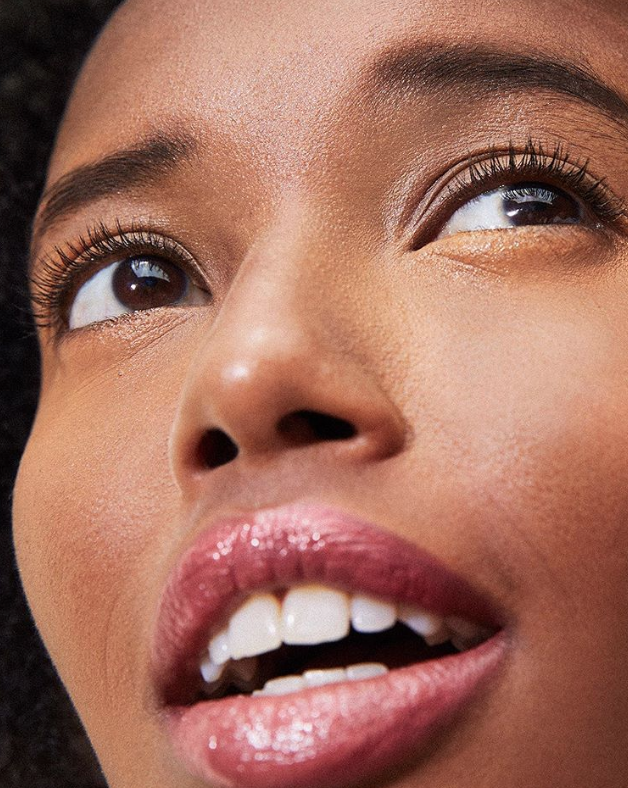
DID YOU KNOW: Black, Indigenous, People of Color (BIPOC) suffer from higher incidences of chronic disease linked to toxic chemical exposure?
CASE STUDIES THAT SUPPORT THIS FACT:
According to the Environmental Working Group (EWG)'s Skin Deep scoring system which lists hazard ratings for nearly 70,000 products and 9,000 ingredients on the market, 1 in 12 products marketed to Black women ranked highly hazardous. The U.S. government doesn't review the toxicity of products before they're sold and companies are allowed to use almost any ingredient they wish without regard for how safe they are.

Of these products ranked, hair relaxers and hair color were some of the worst offenders. Scientists have found that use of chemical hair straighteners has been linked to increased risk of the formation of noncancerous growths in the uterus as well as premature birth, low infant birth weight, and other pregnancy and birth-related problems. Products used predominantly by black women may contain more hormonally‐active compounds. In a national prospective cohort study (from the IJC), permanent dye use was associated with 45% higher breast cancer risk in black women, and 7% higher risk in white women. Beauty products can have endocrine disruptors such as phthalates and heavy metals, and since disclosure requirements are limited and inconsistent, consumers aren’t always aware of what they are putting on (and ultimately, inside) their bodies.
REMIND ME, WHAT ARE “ENDOCRINE DISRUPTORS?”
Endocrine disruptors are toxic chemicals that mimic the estrogen our bodies naturally produce & can throw our levels out of whack, creating a slew of unpleasant symptoms and serious side effects. Other chemicals (often found in personal care products) directly stimulate or inhibit the endocrine system and cause overproduction or underproduction of certain hormones. Endocrine disruptors, such as parabens, carbon dyes and plastic softeners (Pthalates), found in many beauty products, cleaning supplies, everyday plastics (from water bottles to food storage containers & shower curtains) etc., are linked with developmental, reproductive, brain, immune, and other more serious problems.
SO WHAT DO WE DO ABOUT IT?
For BIPOC, switching to safer personal care products (that perform just as well!) can reduce one’s exposure within a short period of time.

One brand we love, Beauty Counter has a "never list" of 1800 toxic ingredients that will never be found in any of their products, and they have been working hard to offer more clean beauty products for women of color, including 18 new foundation shades and more pigmented blushes, lipsticks, and eye shadows (in tandem with their federal reform efforts). Beauty Counter wants to change the fact that fewer than 25% of beauty products marketed to Black women score low in potentially hazardous ingredients, and are committed to creating more beauty options for women of color.
WHAT OTHERS IN THE BEAUTY SPACE ARE DOING:
Now that this information is more widely known, we are seeing some amazing changes by creators in this industry. Online marketplaces like Blk & Grn are selling all natural products made by Black artisans. Major corporations like Sephora have public chemical policies to remove toxic chemicals from products in their stores. We LOVE Olive Branch Green Beauty which is another Black owned online marketplace for all natural, vegan & organic beauty care items. The brand Black Girl Sunscreen also makes a clean sunscreen for dark skin that dries clear. There is still so much work to be done, but by supporting brands making clean beauty products for BIPOC, we can reinforce how important this is to the market and start seeing even more options available.
WHAT WE CAN DO AT HOME TO GET INVOLVED:
Start buying from and sharing brands and products that are made by and for BIPOC (There is a great list here!)
Get the conversation going on social media and in your communities!
Check out organizations like Black Women for Wellness (https://www.bwwla.org/) for more ways to educate yourself, to donate, and to know what to look for when voting!
RESEARCH STUDIES:
[1] Maningding E, Dall’Era M, Trupin L, Murphy LB, Yazdany J. Racial/Ethnic Differences in Prevalence of and Time to Onset of SLE Manifestations: The California Lupus Surveillance Project (CLSP). Arthritis Care Res (Hoboken). https://onlinelibrary.wiley.com/doi/abs/10.1002/acr.23887
[2] Adamkiewicz G, Zota AR, Fabian MP, Chahine T, Julien R, Spengler JD, et al. Moving environmental justice indoors: understanding structural influences on residential exposure patterns in low-income communities. Am J Public Health 2011;101(suppl 1): S238–45 www.pubmed.ncbi.nlm.nih.gov/21836112/
[3] James-Todd, Tamara, African American and African-Caribbean women are more likely to use hair products that contain hormonally active chemicals (placenta, estrogen, endocrine disrupting chemicals), www.ncbi.nlm.nih.gov/pubmed/21626298
[4] Zota, Ami, Women of color are disproportionately affected by environmental toxins such as beauty-product related environmental chemicals. This is independent of socioeconomic status, www.ncbi.nlm.nih.gov/pubmed/28822238
[5] Eberle, Sandler, Taylor, White, Hair dye and chemical straightener use and breast cancer risk in a large US population of black and white women. https://onlinelibrary.wiley.com/doi/abs/10.1002/ijc.32738
[6] Zota, Ami, Vaginal douching increases exposure to certain phthalates and contributes to the racial disparities in phthalate exposure, www.ncbi.nlm.nih.gov/pubmed/26174070
[7] Harley, Kim et al. Reducing Phthalate, Paraben, and Phenol Exposure From Personal Care Products in Adolescent Girls: Findings From the HERMOSA Intervention Study, pubmed.ncbi.nlm.nih.gov/26947464/
[8] Economic Snapshot of the Salon and Spa Industry, Senate Finance Archive, https://www.finance.senate.gov/imo/media/doc/Professional%20Beauty%20Association-%202014%20Economic%20Snapshot%20of%20the%20Salon%20Industry.pdf
[9] Nail Files: A Study of Nail Salon Workers and Industry in the United States, UCLA Labor Center, www.labor.ucla.edu/wp-content/uploads/2018/11/NAILFILES_FINAL.pdf
